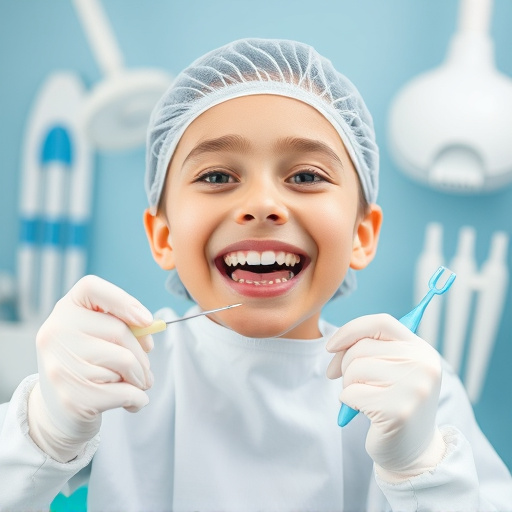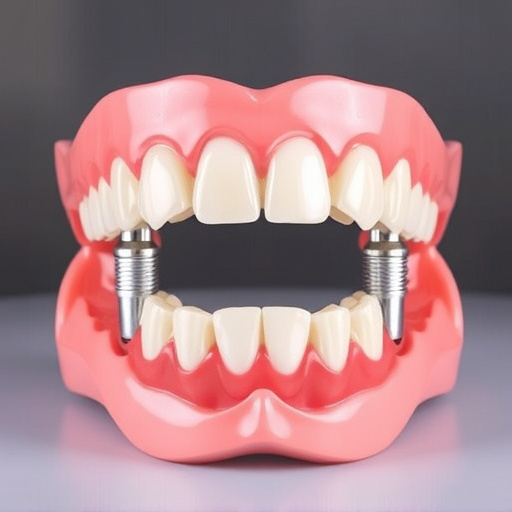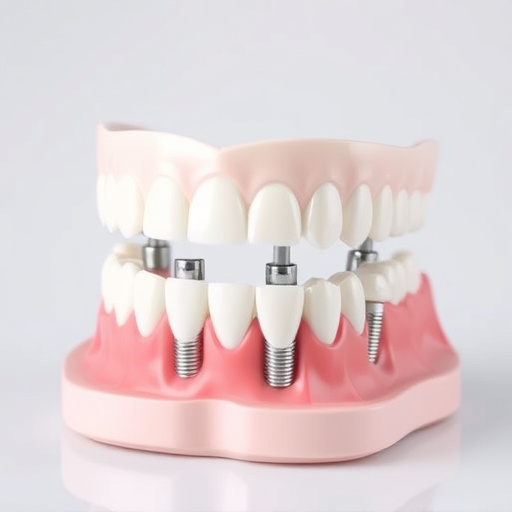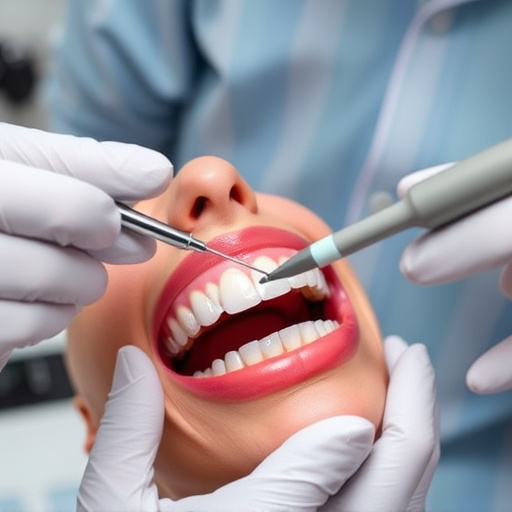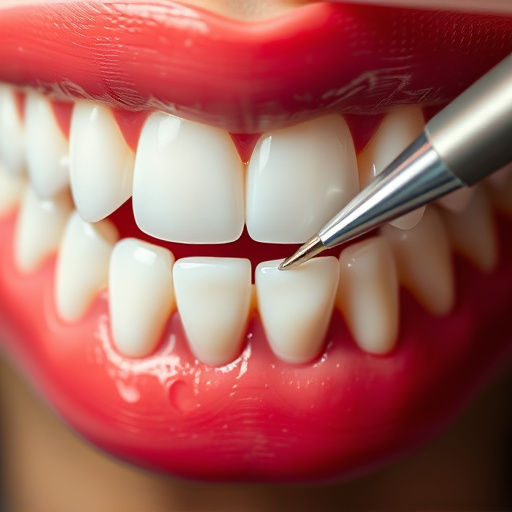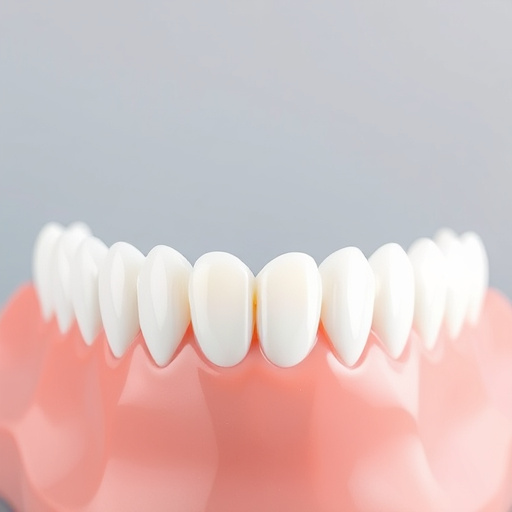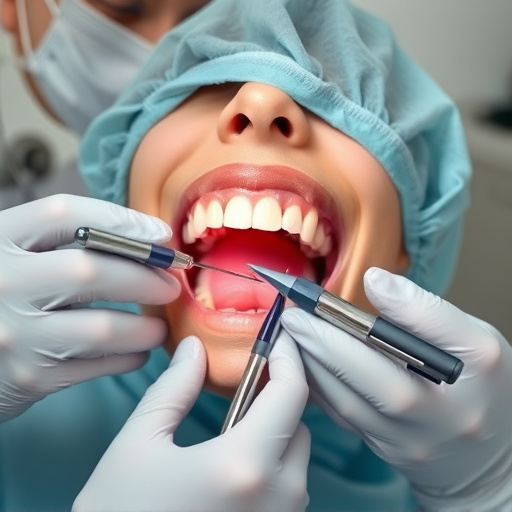Regular oral cancer screenings through dental check-ups and advanced technologies significantly enhance early detection, leading to improved treatment success rates, less invasive procedures, and better overall oral health outcomes. Integrating oral cancer screening into general dentistry practices is crucial for proactive management and saving lives.
Oral cancer, often overlooked, silently progresses, striking nearly 50,000 Americans annually. Understanding its insidious nature is key to improving prognosis. This article explores how oral cancer screening plays a pivotal role in early detection, enhancing treatment success rates significantly. We delve into the silent progression of the disease, analyze the impact of timely intervention, and present effective screening methods for prevention. By implementing these strategies, healthcare providers can revolutionize oral cancer care.
- Understanding Oral Cancer's Silent Progression
- The Role of Early Detection in Treatment Success
- Implementing Effective Screening Methods for Prevention
Understanding Oral Cancer's Silent Progression

Oral cancer, like many other forms of cancer, progresses silently and insidiously. Often, patients do not experience noticeable symptoms until the disease has advanced significantly. This makes early detection through oral cancer screening crucial for improving prognosis. The initial stages of oral cancer may present as small, seemingly harmless lesions or spots inside the mouth that can easily go unnoticed by individuals. Over time, these lesions can grow and change, developing into ulcers or non-healing sores. Even more concerning, oral cancer can spread to nearby lymph nodes, a process that further complicates treatment.
Regular visits to a family dentistry practice for checkups and preventive dentistry measures like oral cancer screening are essential in combating this silent threat. Dental professionals are trained to identify these subtle changes and can perform quick, non-invasive screenings as part of routine dental care. Early detection allows for more effective treatment options, including less invasive surgical procedures and improved survival rates. By integrating oral cancer screening into regular dental checkups, individuals can take proactive steps towards maintaining their oral health and overall well-being.
The Role of Early Detection in Treatment Success
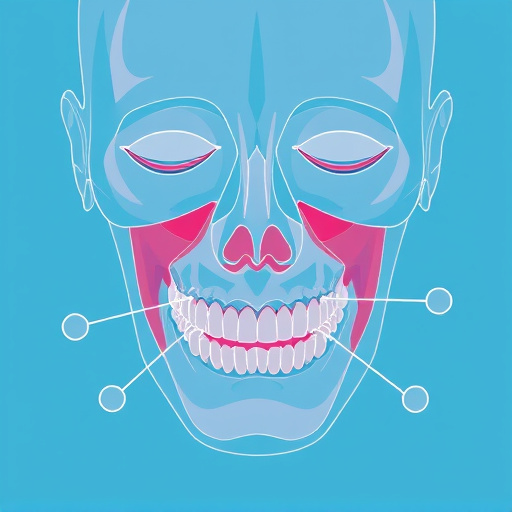
Early detection plays a pivotal role in enhancing the success rates of treating oral cancer. When detected at an early stage, before the disease spreads to other parts of the mouth or nearby structures, the prognosis significantly improves. This is where oral cancer screening becomes an invaluable tool for healthcare professionals and patients alike. Regular screenings can identify subtle changes in the oral cavity, such as unusual lesions or moles, which might be missed during routine dental check-ups or even by the patient themselves.
Timely intervention through early detection allows for less invasive treatment options, including surgical procedures with smaller incisions, fewer side effects, and shorter recovery times. Moreover, it reduces the risk of complications and enables oncologists to employ targeted therapies, ultimately leading to better overall outcomes. Therefore, incorporating oral cancer screening into general dentistry practices is crucial, ensuring that dental cleanings and check-ups not only address existing oral health issues but also contribute to potential cancer prevention and early treatment.
Implementing Effective Screening Methods for Prevention

Implementing effective oral cancer screening methods is a proactive step towards prevention. Regular check-ups with dental professionals play a pivotal role in early detection. Beyond routine teeth cleaning and restorative dentistry procedures, advanced technologies are now available to aid in this process. For instance, clear aligners, while primarily known for their aesthetic benefits in straightening teeth, can also be utilized as part of an oral cancer screening protocol due to their ability to provide detailed visual access to the mouth’s interior.
By integrating these methods into standard dental practice, we enhance our chances of identifying potential anomalies at early stages. Early detection of oral cancer significantly improves prognosis and treatment outcomes. This proactive approach not only saves lives but also ensures that patients receive timely interventions, potentially preventing the progression of cancerous cells and preserving overall oral health.
Oral cancer screening is a powerful tool that can significantly enhance prognosis through early detection. By understanding the silent progression of the disease and implementing effective screening methods, healthcare professionals can ensure better treatment outcomes for patients. The role of early detection cannot be overstated; it not only improves survival rates but also reduces the impact of cancer on individuals’ lives. Regular oral cancer screening should be a priority in preventive care to save lives and preserve smiles.






